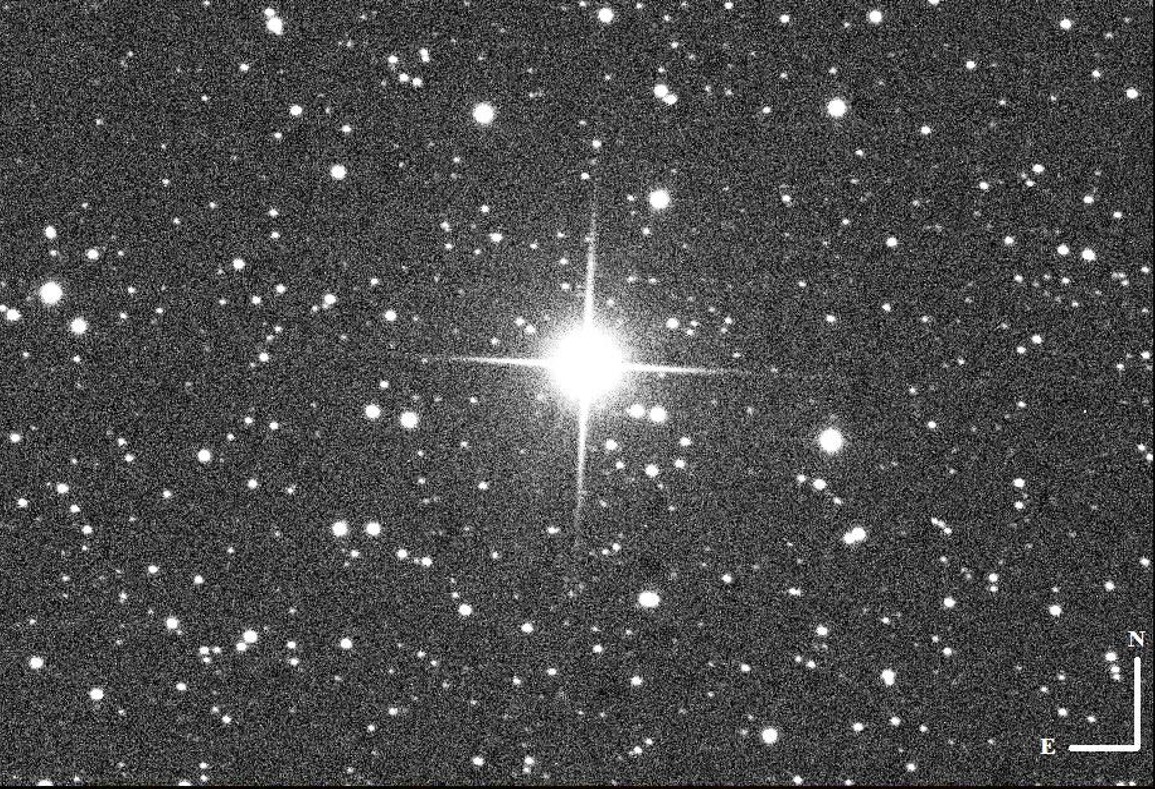Discovery of lithium in a stellar explosion [NOT TRANSLATED]

– Now for the first time radioactive beryllium – which transforms into lithium – has been detected in a nova explosion.
– The contribution of stellar explosions is crucial to understand the evolution of the lithium content of the Milky Way.
Barcelona, 19 February 2015.
Recent observations solve a long-standing problem of lithium origin. Nova explosions are one of the predicted stellar factories of lithium, but this element had never been detected in these stars until now. Now for the first time, radioactive beryllium (7Be), the parent nucleus of lithium (7Li) has been observed for the first time in a nova, V339 Del (Nova Delphini 2013). In the 1990’s, Margarita Hernanz, from ICE (CSIC-IEEC) and colleagues, developed detailed models of lithium synthesis in novae. Today, Hernanz publishes a News & Views paper in Nature on the new findings that validate their theory.
Lithium is the lightest chemical element in the periodic table, apart from hydrogen and helium. It is the lightest and least dense solid element – since hydrogen and helium are gases – in standard conditions. Lithium has several industrial applications, like cell phone batteries, and plays an important role in human health. But its origin is still controversial.
It is known since the 1950′s that almost all the chemical elements originate in stars, where they are produced by nuclear reactions, starting with hydrogen fusion into helium. The elements made in stars are expelled by winds or by stellar explosions of supernovae and novae to the interstellar medium, from which new stars will form. We are all made of “stardust”. However, the main origin of a few elements – the so-called light elements lithium, beryllium and boron – is different.
The origin of lithium and its evolution since the birth of the Universe is a long-standing and challenging problem. A fraction of lithium was created during the Big Bang, about 13.5 billion years ago. Nuclear reactions induced by energetic cosmic rays in the interstellar medium, in between the stars, also produce lithium. But there’s still room for a stellar production of lithium, to explain the evolution of the lithium content in the Milky Way, especially its increase after the formation of the Solar System, 4.5 billion years ago.
An elusive stellar source of lithium
Scientists believe that old low-mass stars like red giants and nova explosions could be lithium factories. Until now, lithium has been detected in several giants, but never before in novae.
Novae are stellar explosions occurring on top of white dwarfs. White dwarfs are stars ending their life, after having exhausted all their nuclear fuel. They have a mass similar to the Sun with a size like the Earth, meaning that their density is huge. If isolated, their destiny is to dim forever, but when they have a close companion star, they can be “rejuvenated”. The white dwarf pulls hydrogen-rich material from its companion star. This matter builds-up a dense shell where hydrogen ignites. A thermonuclear flash follows – like a hydrogen bomb – provoking a fast expansion and the ejection of mass, with a large increase of brightness. “The fusion of 3He and 4He forms 7Be, which is radioactive and transforms into 7Li with a timescale of 53 days. Fresh 7Be produced in the vicinity of the stellar surface should be transported into cooler zones before it decays, preserving its daughter nucleus 7Li from destruction once it is created. This is the Cameron and Fowler 7Be transport mechanism to produce 7Li in stars, predicted in the 1950’s”, explains Hernanz. A detailed calculation of lithium synthesis in novae was published by Hernanz, José (UPC-IEEC), Isern (CSIC-IEEC) and Coc (CSNSM-IN2P3, França) in a letter to Astrophysical Journal in 1996.
Observations, key to test the theory
Scientists from the National Astronomical Observatory of Japan have provided the first observational evidence of lithium synthesis in novae, through the detection of radioactive 7Be – the parent nucleus of 7Li – during the nova explosion V339 Del (Nova Delphini 2013). This challenging measurement has been performed with the Subaru Telescope operating at high spectral resolution, about 0.0052 nm, able to distinguish the doublet of 7Be II from that of 9Be II, both at wavelengths around 312-313 nm.
The amount of 7Be-7Li observed is as large or even larger than predicted. “This could mean that novae play a more important role as contributors to the galactic lithium than has been expected” concludes Hernanz.
Reference articles:
-Hernanz, M. A lithium -rich stellar explosion. Nature 518, 307-308 (2015)
-Tajitsu, A., Sadakane, K., Naito, H., Arai, A. & Aoki, W. Nature 518, 381-384 (2015)
-Hernanz, M., José, J., Coc, A. & Isern, J. Astrophys. J. 465, L27-L30 (1996)
Researcher contact details
Margarita Hernanz , ICE (CSIC-IEEC)
Tel: 93 737 97 88 (Ext. 933054)
Communication Department IEEC
Cristina Jiménez
Tel: 93 280 20 88 (Ext. 26)
News related:
spacecom_explosions_lithium [NOT TRANSLATED]
